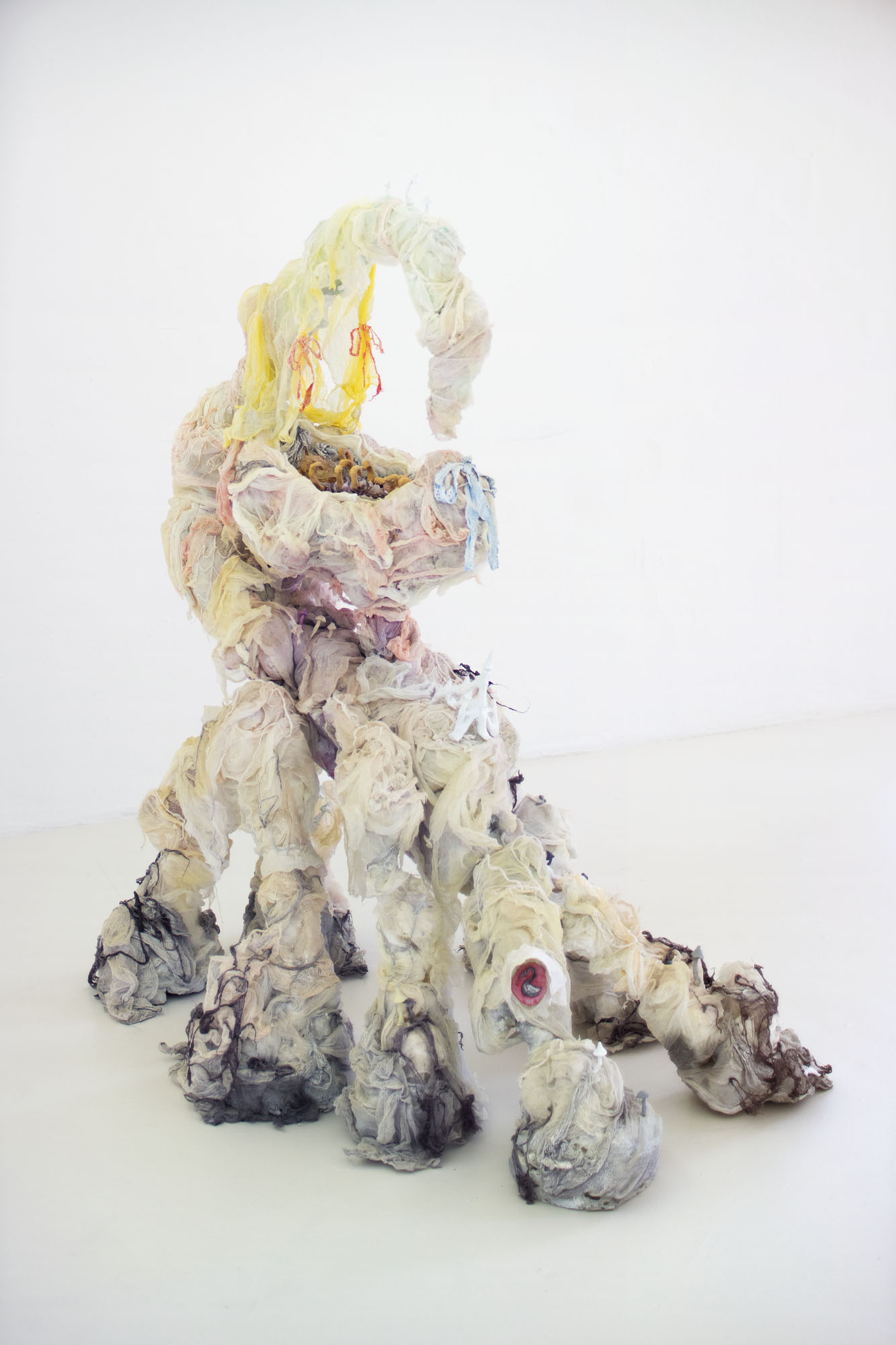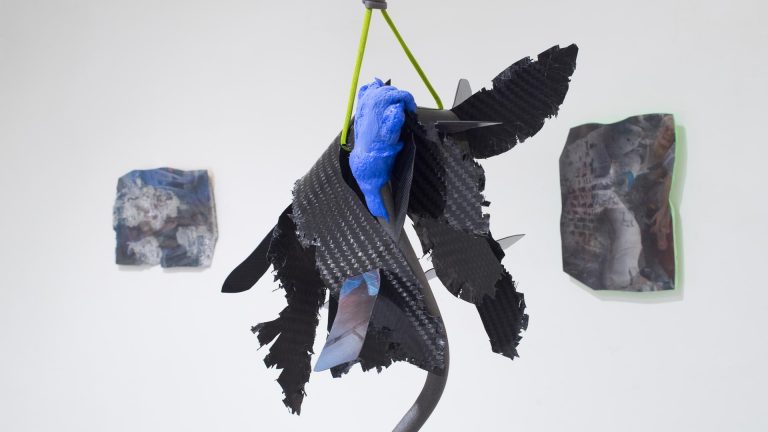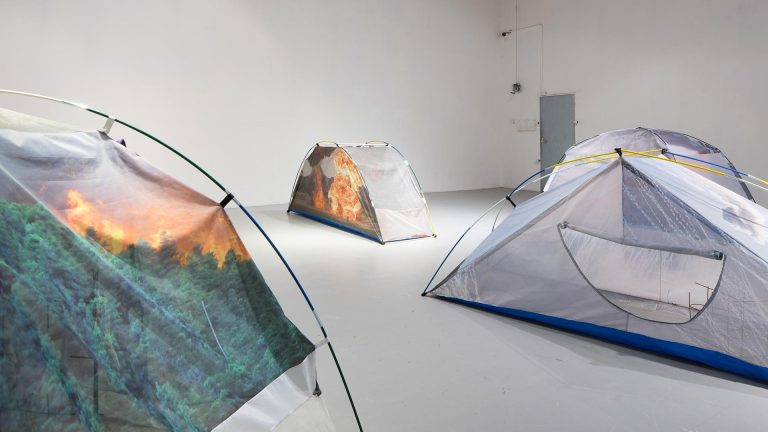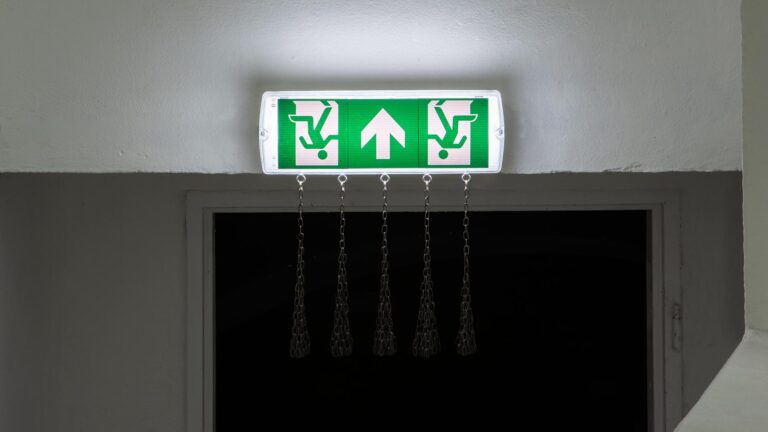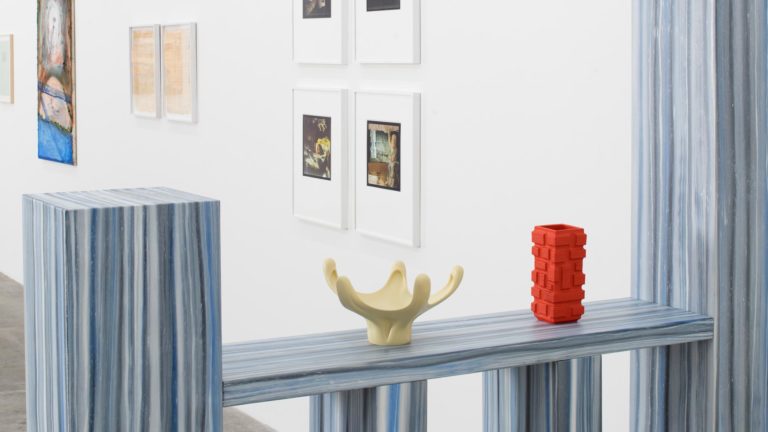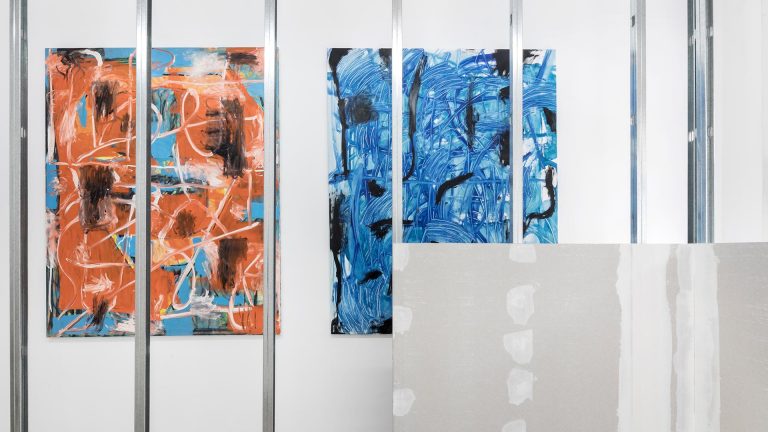Artists: Marek Delong, Anna Slama
Exhibition title: Will I become a better person if I stop dreaming about the stars?
Curated by: Michal Novotny
Venue: Futura, Prague, The Czech Republic
Date: May 10 – June 23, 2019
Photography: all images copyright and courtesy of the artist and Futura
Marek Delong and Anna Slama are an artist duo based in Prague and Stockholm.
Their artistic practise constantly focuses on installation which often blends into a site-specific scenography. The landscapes they create are accompanied by statues, objects and moving image. Their work balances on the verge of the abstract and the figurative by creating a scene populated by characters coming out of a psychedelic dream. This approach to work helps them to unveil the inner world of each artwork, the magic and the intimate experience against the backdrop of a landscape closely communicating with its audience, and aims to create a free space of emotions and therapeutic experience.
They have together presented their artwork at solo exhibitions: Sticky Moment (EKA Gallery, Tallinn, 2018), Sugar Hunter’s Feast. (Konstfack Gallery, Stockholm 2017) or Femme Fatale Brewery(Karlin Studios, Prague, 2017), as well as at collective exhibitions:When the sick rule the world (Gr_und, Berlin 2019), This Placement (Another Gallery, Mexico City, 2019), Robin (YABY, Madrid, 2018) nebo Wicked Anima Fun (Gallery Stephanie Kelly, Dresden, 2018), Letting Go (Trafo Gallery Budapest, 2017), Afterbirth of a Dream (Meetfactory, Prague, 2017
The name of the exhibition Will I Be a Better Man If I Stop Dreaming of the Stars? is a kind of double entendre commentary on a certain academic formality of the topics in the contemporary art production. Delong and Slama are in contrast to trying to translate the world problems into the language of art, turning their attention on the moment of (auto) therapy and a kind of archetypal spirituality, sometimes even brushing on Art brut and Naïve art, the form isn’t chosen primarily with emphasis on the question of its availability to the wider audience. This is more of a problem of the kind of art which aims to change the world but merely ends up among a group of friends. Marek Delong and Anna Slama don’t position themselves outside the art field, defined mainly by its autonomy. That might seem a bit naïve anyway, the revival of primitivism is a classic after all. It is more important to turn away from the academic language of art towards something more subconscious, primal.
It doesn’t by any means regard the form, but the search for the sense and relation.
The emphasized hand-made aspect, figurativity, sometimes almost life-like,even some kind of ritual, ornamental or fractal overtone of each single artwork highlights on one hand the intimate subconscious relationship between the author and the artwork, on the other hand there’s the effort to connect with the archetypal line of art, which was once pushed into background by the emphasis on the reason, idea. That makes it a sort of romantic position, not the escapist one, the position of escape from reality to the imagination. Delong and Slama undoubtedly don’t deny the problems of the world today, there are many references to be found in their work, for example in the non-natural aspect. However, when it comes to their stance, they approach the role of art differently, unexplicitly, emphasizing the holistic character of the aesthetic experience.
The imagination, authenticity and other themes connected to the work of Delong and Slama aren’t admittedly anything new in the art. However, it’s not a matter of fashionable ironic comeback to the approaches nowadays considered to be conservative. Neither was it an attempt to finish, get out of the constant fast progress towards something finite, static.
The couple don’t define themselves against the definition of art as a continual progress, nor do they build a simple opposition to the virtual one.
The subconscious, basal aspect can be traced back even in the way the social networks work, as well as in the evolution of trends and micro-trends. They, when examined from the inside, operate somehow out of control and elementally. Liking for the dreamy might be a logical reaction of the creative to the schematized world of the virtual, it doesn’t necessarily have to detract from the capacity to visualise some kind of a fundamental structure of the way humans relate. Similarly, the connection with the non-institutionalised spirituality has in the art always been present, even in the character of exhibition space as a white cube.
The visual art is a toxic environment. Artists manoeuvre in a ruleless competition where the artworks are constantly being evaluated from the angle of utterly unclearly defined quality, oscillating between the academicness and simple marketability. Everybody is expected to invest everything on a long term basis with a negligible promise of recoverability. It is probably typically paradoxical that the art-related people are at the same time the most socially, politically and ecologically (and so on) engaged with almost absolute agreement in the continually discussed affairs. A big portion of the current art production deals with great issues of the civilisation: emancipation, solidarity, activism. There stands the utopian world of the engaged ones on one hand and the distophy of self-exploitation under constant pressure on the other. The works of Delong and Slama are perhaps trying to make peace between these two poles. They aren’t trying to achieve that from the avant-garde manifestational positions of superiority, revolution and rupture, the dictate of the ultimately right. Nor from the
position of an arbitrary, aesthetically formal game with more or less ironized connection of meanings and symbols. They do it by cautiously evading the insurmountable differences, by emphasizing the therapy, intimity in the detail, the contact resulting of that and the holistic, openly defined spirituality.
Based on all that, the exhibition is conceived as a narrative, a myth lazily floating through a dreamy space while melting its essence against the backdrop of the melody of a story constructed by a New York based artist Nurse Stockings.

